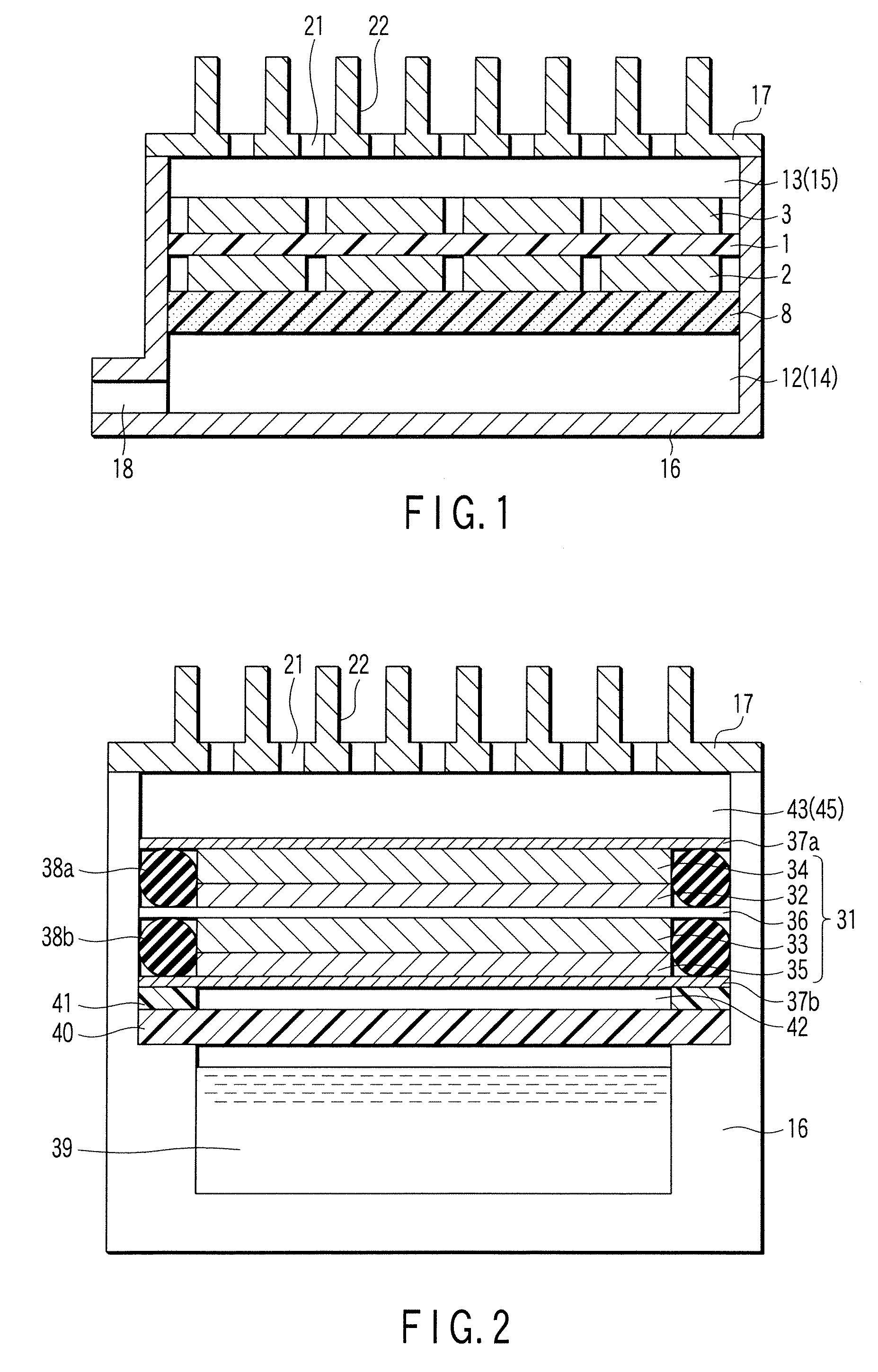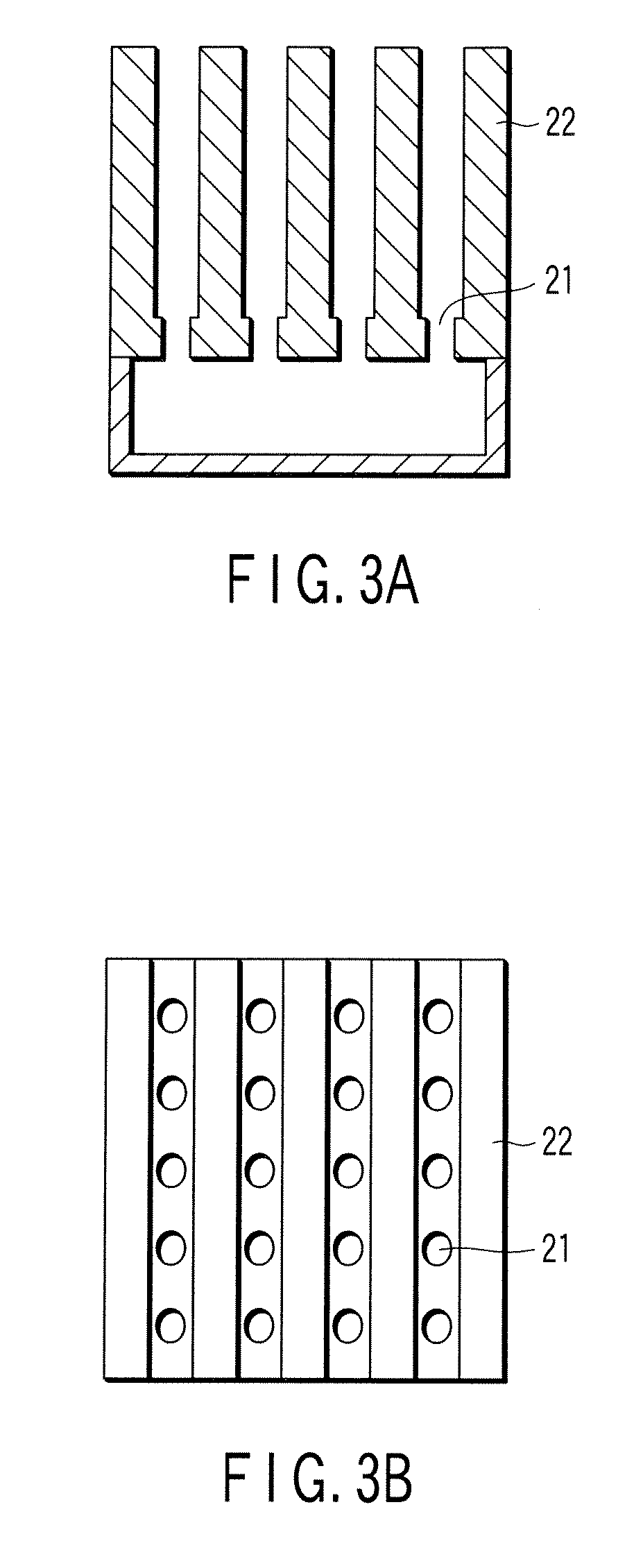Fuel Cell
a fuel cell and cell technology, applied in the field of fuel cells, can solve the problems of reducing electricity generation efficiency, difficult to obtain a sufficient output characteristic, and difficult to employ forced air cooling means, so as to improve fuel cell output and improve the ability to discharge heat from the air chamber. , the effect of reducing cross-over
- Summary
- Abstract
- Description
- Claims
- Application Information
AI Technical Summary
Benefits of technology
Problems solved by technology
Method used
Image
Examples
Embodiment Construction
[0040]FIG. 1 shows an example (cross-sectional view) of a schematic configuration of a fuel cell according to the present invention. In FIG. 1, reference numeral 1 denotes a solid electrolyte membrane, 2 denotes a fuel electrode, 3 denotes an air electrode, 12 denotes a fuel tank, 13 denotes an air chamber, 16 denotes a casing of the fuel tank side, 17 denotes a casing of the air chamber side, 21 denotes an inlet port, and 22 denotes a fin.
[0041]A membrane electrode assembly (MEA) serving as a power generation section is constituted of a solid electrolyte membrane 1, and a fuel electrode 2 (anode) and an air electrode 3 (cathode) which are disposed on both sides of the solid electrolyte membrane 1. The fuel electrode 2 and the air electrode 3 are made of carbon paper coated with platinum / ruthenium alloy catalyst, and are joined to the solid electrolyte membrane 1 by thermo-compression bonding such that their surfaces coated with the catalyst are in contact with the membrane 1. In th...
PUM
| Property | Measurement | Unit |
|---|---|---|
| temperature | aaaaa | aaaaa |
| thickness | aaaaa | aaaaa |
| diameter | aaaaa | aaaaa |
Abstract
Description
Claims
Application Information
 Login to View More
Login to View More - R&D
- Intellectual Property
- Life Sciences
- Materials
- Tech Scout
- Unparalleled Data Quality
- Higher Quality Content
- 60% Fewer Hallucinations
Browse by: Latest US Patents, China's latest patents, Technical Efficacy Thesaurus, Application Domain, Technology Topic, Popular Technical Reports.
© 2025 PatSnap. All rights reserved.Legal|Privacy policy|Modern Slavery Act Transparency Statement|Sitemap|About US| Contact US: help@patsnap.com



